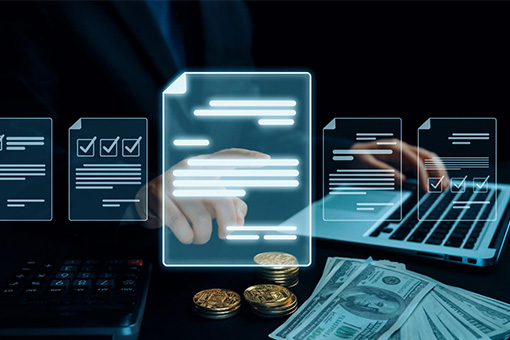Why Invoice Automation Is Now a CFO Priority?
Invoice automation moves finance from back-office to strategic. CFOs see invoice automation as vital. Economic uncertainty raises cost pressure. Automated invoice processing offers cost control. A strong invoice solution boosts cash visibility. CFOs demand real-time insights on payables. They want to process invoices faster. Invoice automation solution helps meet these goals. Many finance leaders rank invoice automation top of their tech stack. Automation in AP invoice processes can free teams. It shifts focus to analysis and planning.
From Cost Center to Strategic Value Driver
Invoice processing software reduces routine tasks. Teams spend less time on manual work. They focus on value-added activities. Automated invoice system transforms AP invoice automation. It provides data for forecasts. CFOs use process invoices data to guide strategy. Payable invoice management software adds predictive insights. This shifts AP from a cost center to a value driver. Finance leaders increasingly embrace an Invoice Automation Solution as a core component of their transformation strategy to fuel growth.
How Economic Uncertainty Accelerated the Shift
Volatile markets push CFOs to cut waste. Manual invoice processes risk errors and delays. Invoice automation reduces these risks. Automated invoice processing improves working capital. An invoice solution ensures timely payments. Cloud-based automated invoice system scales with business. CFOs now prioritize resilient tech stacks. They include invoice automation to handle shocks. Surveys show many firms speed AP automation adoption in 2025.
Invoice Automation’s Role in Cash Flow Visibility
Real-time tracking of invoice status aids cash management. Invoice processing software shows pending liabilities. Automated invoice processing surfaces payment trends early. CFOs leverage this visibility in forecasts. Invoice automation solution links to ERP for unified data. AP invoice automation feeds dashboards for spend analysis. This clarity improves decision-making. It helps CFOs navigate tight liquidity scenarios.
Understanding the 2025 CFO Tech Stack

What Is a Modern CFO Tech Stack?
A modern CFO tech stack is integrated. It connects finance tools seamlessly. It supports agile decision-making. Invoice automation must fit into this ecosystem. A holistic stack includes planning, analytics, and compliance. Invoice processing software is a key component. Automated invoice system works alongside ERP and BI. It ensures end-to-end financial workflows. CFOs look for unified, cloud-based solutions.
Core Components of a Digital Finance Ecosystem
- ERP and Accounting Platforms: The foundation for financial records. They host core data and chart of accounts.
- AP Automation and Invoice Processing: Automates invoice processes. It uses invoice automation solution capabilities. A robust invoice solution integrates with ERP.
- AI-Driven Financial Planning Tools: Offer predictive finance insights. They leverage data from invoice processing software.
- Compliance and Audit Software: Ensures regulations are met. Automated invoice system logs every action for audit readiness.
- Analytics and Dashboard Tools: Provide real-time KPIs. They draw on AP invoice automation data.
ERP and Accounting Platforms
ERP systems store master data. They record payables and receivables. Invoice automation integrates to push approved invoices. This avoids manual rekeying. An invoice processing solution must support major ERPs. It ensures smooth data flow. This integration is critical in the CFO tech stack.
AP Automation and Invoice Processing
AP automation sits at the heart of payables. It handles invoice capture, validation, matching, and approvals. Invoice processing software often uses AI and OCR. An automated invoice system speeds cycle times. It reduces errors in invoice processes. A strong invoice solution fits existing workflows. It supports scalable AP invoice automation.
AI-Driven Financial Planning Tools
AI-driven tools forecast cash based on payables and receivables. Data from invoice automation feeds these models. Invoice processing software enhances forecast accuracy. Automated invoice processing ensures clean data. CFOs rely on this for scenario planning. The synergy of invoice automation solution and AI planning is powerful.
Compliance and Audit Software
Compliance demands clear trails for payables. Automated invoice system logs each invoice action. Invoice processing software stores validations and approvals. This audit-ready design reduces risk. It supports regulatory reporting. Invoice automation solution must meet security standards. This ensures CFOs can defend processes.
Where Invoice Automation Fits In

Integrating Seamlessly with ERPs
Invoice automation solution must sync with ERP. It imports vendor data and pushes approved invoices. This avoids rekeying errors. Invoice processing software uses APIs or pre-built connectors. Integration is key to process invoices smoothly. CFO tech stacks depend on this seamless flow. A robust automated invoice system ensures data consistency.
Unlocking Real-Time Spend Intelligence
Automated invoice processing gives real-time spend insights. Invoice processes data feeds dashboards. CFOs track AP metrics instantly. They monitor trends in spend categories. Invoice processing software powers these analytics. Invoice automation solution provides visibility into outstanding liabilities. This intelligence supports strategic sourcing and negotiation.
Reducing Cycle Time and Manual Intervention
Invoice processes often stall due to manual checks. Invoice automation software automates data capture and matching. Automated invoice processing flags only exceptions. Teams spend less time on routine tasks. An invoice solution speeds approvals via rule-based workflows. AP invoice automation cuts cycle time dramatically. CFOs see faster closes and improved DPO.
Must-Have Features of Invoice Automation Tools in 2025

AI-Powered Invoice Matching and Fraud Detection
Invoice automation relies on AI matching. It compares invoices with POs and receipts. It flags anomalies or possible fraud. Invoice processing software uses machine learning to improve accuracy. Automated invoice processing adapts to varied invoice formats. An invoice solution must include intelligent matching. AP invoice automation with fraud detection reduces risk and errors.
Mobile and Cloud-Based Interfaces
CFO tech stacks demand mobility. Invoice processing software must be accessible on mobile. Cloud-based automated invoice system enables remote work. Teams can review invoices on the go. Invoice automation solution with mobile interfaces boosts productivity. Cloud deployment ensures scalability and fast updates.
Global Compliance and Multi-Currency Support
Large firms need multi-currency invoice processing. Invoice automation software must handle tax rules across regions. Automated invoice processing supports local regulations. An invoice solution should manage exchange rates and local compliance. AP invoice automation for global teams ensures consistent processes. This feature set is vital for CFOs operating internationally.
Real-Time Reporting and KPI Dashboards
Invoice automation solution must offer dashboards. Invoice processing software tracks metrics: cycle time, exception rate, touchless rate. Automated invoice processing data feeds these KPIs. CFOs use dashboards for quick insights. An invoice solution should allow custom reports. AP invoice automation dashboards inform strategic decisions.
Top Invoice Automation Platforms for CFOs in 2025
Rather than list competitors, focus on selection criteria. CFOs evaluate invoice automation tools on integration, AI, scalability, and support. They choose solutions that fit their ERP and finance ecosystem. They assess invoice processing software for ease of use. They look for an automated invoice system with robust features. They test AP invoice automation in proofs-of-concept. This ensures the chosen invoice solution meets needs.
Measurable ROI: What CFOs Are Gaining from Invoice Automation

Cost Savings per Invoice Processed
Automated invoice processing reduces manual hours. Invoice processes run faster. Teams handle higher volumes with same headcount. Invoice automation solution lowers labor costs. Invoice processing software delivers clear ROI. CFOs measure cost per invoice before and after automation.
Days Payable Outstanding (DPO) Improvements
Invoice automation speeds approvals. Faster processing can extend DPO strategically. CFOs use process invoices data to optimize cash flow. Invoice processing software provides visibility into payment timing. An automated invoice system supports flexible payment schedules. This balance improves working capital management.
Audit-Readiness and Compliance Accuracy
Invoice automation solution logs every action. Invoice processing software produces audit trails. Automated invoice processing reduces errors and omissions. CFOs gain confidence in compliance. This lowers audit costs and risk. AP invoice automation builds trust with auditors and regulators.
Enhanced Vendor Relationships
Timely and accurate payments boost vendor trust. Invoice automation speeds cycle times. Invoice processes errors drop significantly. Vendors receive clearer status updates. Invoice processing software can include vendor portals. Automated invoice system improves communication. CFOs maintain strong supplier relationships.
Implementation Roadmap: How CFOs Can Adopt Invoice Automation
Stage 1: Audit Current Invoice Processes
Map existing invoice workflows. Identify pain points and manual steps. Measure baseline metrics: cycle time, error rate. Review invoice processing software usage. Document current invoice processes. This audit informs selection of invoice solution.
Stage 2: Define AP Automation Goals
Set clear objectives: reduce cycle time, cut errors, improve visibility. Align goals with overall finance strategy. Determine KPIs for invoice automation. Choose metrics for automated invoice processing success. Communicate goals to stakeholders.
Stage 3: Select the Right Tool and Partner
Evaluate invoice automation solution providers. Check integration with ERP. Assess invoice processing software features: AI matching, OCR, dashboards. Verify support for automated invoice system requirements: mobile, cloud, global compliance. Consider vendor experience and service. Pilot AP invoice automation before full rollout.
Stage 4: Monitor, Optimize, Scale
Launch pilot for a subset of vendors. Track KPI dashboards from invoice processing software. Identify exceptions and refine rules. Expand automated invoice processing to more teams and regions. Continuously optimize workflows. Scale invoice automation solution across the enterprise.
Common Pitfalls to Avoid When Automating Invoicing
Lack of Internal Alignment Between Finance and IT
Finance and IT must collaborate. Misalignment can stall integration. Clearly define roles for invoice automation implementation. Ensure IT supports invoice processing software integration. AP invoice automation succeeds with joint ownership.
Underestimating Change Management Needs
Teams resist new systems. Provide training on the invoice solution. Communicate benefits of automated invoice processing. Use change champions to drive adoption. Short training sessions help staff embrace invoice automation solution.
Choosing Tools Without API/ERP Compatibility
Invoice processing software must connect to existing systems. Lack of integration creates manual work. Verify API and connector support early. An invoice automation solution without ERP compatibility undermines outcomes.
The Future of the CFO Tech Stack: What’s on the Horizon?
Predictive Finance and Autonomous Transactions
Data from invoice automation feeds predictive models. Future tools may automate routine transactions. This drives autonomous finance. Invoice processing software lays the foundation. CFOs prepare by adopting robust invoice automation solution now.
Embedded AI for Spend Forecasting
Embedded AI uses invoice data to forecast spend. Automated invoice processing ensures clean inputs. Invoice solution with analytics supports proactive budgeting. CFOs leverage this to stay ahead of market shifts.
Blockchain for Invoice Verification
Blockchain may add tamper-proof verification of invoices. This can enhance trust in invoice processes. Automated invoice systems may integrate blockchain in future. Invoice automation solution providers monitor this trend for roadmap planning.
FAQs: Invoice Automation for CFOs in 2025
How does invoice automation improve financial decision-making?
Invoice automation solution provides timely data. Invoice processing software delivers real-time status. Automated invoice processing feeds analytics. CFOs use insights to guide strategy. It reduces uncertainty in forecasts.
What are the top KPIs to track after automation?
Track cycle time, exception rate, touchless rate, and DPO. Invoice processing software dashboards show these metrics. Automated invoice processing data helps refine workflows. Monitor vendor performance and compliance metrics.
How secure are automated invoice systems?
Modern invoice automation solution uses encryption in transit and at rest. Invoice processing software enforces role-based access. Automated invoice processing logs all actions for audit. Vendors and IT should validate security configurations.
Can invoice automation integrate with legacy ERP systems?
Yes, many invoice processing software solutions offer connectors or APIs. Some require middleware or custom integration. Automated invoice processing works with major ERP platforms. Evaluate compatibility early to avoid delays.
Ready to Upgrade Your CFO Tech Stack with Invoice Automation?
Invoice automation is essential for CFOs in 2025. It streamlines invoice processes, reduces errors, and boosts cash visibility. A robust invoice processing software and automated invoice system must fit your tech stack. To see how Serina.ai’s invoice automation solution integrates into your CFO tech stack, contact us.


